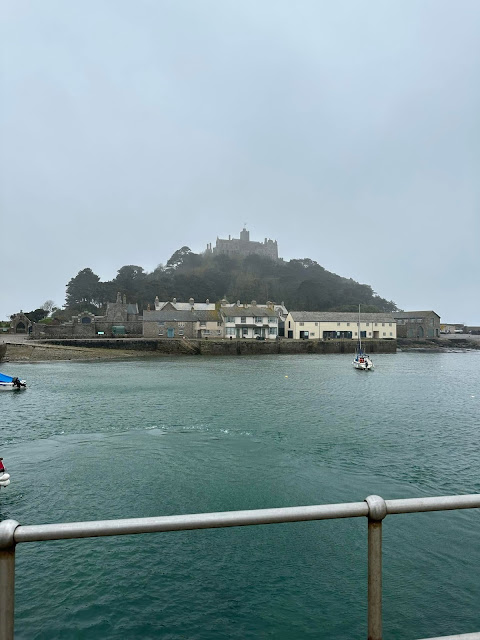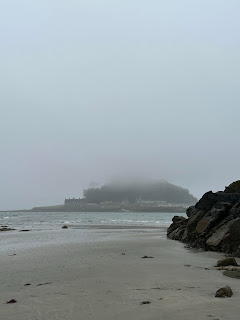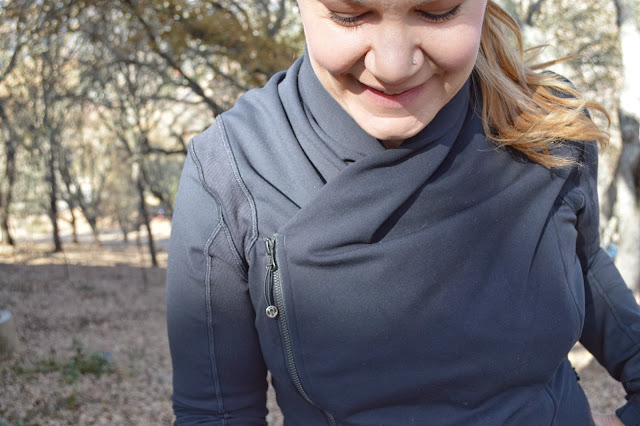England 2023- Torquay to St Michael’s Mount
 |
Something you should know about visiting a tidal island is that nothing can be left to chance. I purchased tickets for St. Michaels Mount about a month in advance carefully inspecting the tidal charts before committing to a date. Being 1 of 43 tidal islands in the UK means the castle, gardens and harbor of the mount are cut off from the mainland when the tide is in. When the tide is out you can walk out on a man made causeway to the island, but for those wanting to visit when the tide is in you can take a very small boat that will ferry you out to the island for a fee. This was not our first rodeo, so to speak, when it comes to tidal islands. St Michael’s Mount was in fact the second tidal island we have visited in England. Back in 2016 we visited the Holy Island of Lindisfarne, narrowly escaping being stranded (see post HERE for that story).
Something I learned on this trip: you can do all of the careful planning that you want but at the end of the day nature will still have it’s way and a wrench can still be thrown into your carefully made plans. The night before we were due to go I received an email letting me know that there was going to be a drastic change in the tides due to the storm that we had all been anticipating. It was rolling in quickly and our window to get out to the island shrank considerably, this meant that we had to get on the road much earlier than anticipated if we were going to make it before the last ferry went out to the island. Grateful that we had more than a few hours notice for this change we vowed to get to bed early so we could make the most of the next day.
Morning came quickly. We bounded down the stairs- well as much as you can bound at early o’clock- to find our cockney transplant host waiting for us in the foyer. I think he was trying to intercept us and herd us into the breakfast room, but alas we had to love them and leave them. A little side note here about our jovial host, or rather his brethren. Torquay was absolutely chock full of transplants from London. I can say with confidence that the only place I heard the Devon accent was the waitstaff in Whetherspoons, otherwise every voice we heard was from London. I can imagine how the locals feel about that.
Leaving Torquay we felt pretty confident that we’d make it in time to catch the last ferry to St. Michael’s Mount, but as the day went on the promised storm we kept hearing about finally made land. We watched the sky go from a blanket of harmless grey to annoyingly misty to a full, dangerous downpour. This was the kind of rainfall where the sky dumps so much water so quickly that you can’t see the road. We fought to see the brake lights of the cars ahead of us through the water that the wipers couldn’t clear fast enough. For some reason I wasn’t nervous. I think I had a naive confidence in the English drivers around us. We were in a country used to the rain after all. Had this been California there would have been many cars pulled off the road with drivers having silent panic attacks. I might have been one of them.
While navigating the seesaw of torrential downpour and reasonable sprinkle we passed through the coastal city of Plymouth. Yes, that Plymouth. The very port the Mayflower departed from in 1620. I find it funny that if you look up Plymouth, England on Wikipedia there is only 1 sentence devoted to this historic event repeated twice in the whole page. That is how vast the history of this port city is. The event that helped to shape the United States as we now know it only warrants 1 sentence in Plymouth’s long maritime history. If we hadn’t been in such a hurry to get to our destination we would have stopped so I could explore. It would have been a nice continuation of all of the accidental Pilgrim connections of our previous trips.
Plymouth is also the place where you leave the county of Devon and enter the peninsula that is Cornwall. You feel a shift as soon as the tires of your car leave the Tamar Bridge and touch the “soil” of Kernow (Cornwall in the Cornish language). Cornwall is different. It just is. It’s hard to explain, but the landscape changes, the people change and the culture. Early Cornwall was inhabited by a Celtic speaking people known as the Britons. The Britons occupied all of what we know as England until the arrival of Roman Rule. Roman occupation as well as an influx of Anglo Saxons, (a people who came from Germanic Europe in the 5th century), pushed the Britons to the west and south west cutting them off. This effectively allowed the Celtic people to flourish independently unitl the 11th century when it was absorbed by England. Cornwall, (like Wales) has managed to maintain its Brittonic culture to this day despite the absorption, and it is this culture that gives Cornwall it’s very unique feel.
We made a pit stop to take a break from the white knuckle driving in a town called Bodmin. It was here that I set off my first alarm and also had my first Morrison’s hot chocolate. It’s times like these that the American accent and the innocent face come in handy. It also helped that I genuinely had no idea what I had done to set off said alarm. I’m grateful I ran into this particular set up while in friendly Cornwall, because let me tell you, this set up was in so many grocery stores we went into after this incident. So, let’s take a moment to detour and talk about this new phenomenon in many grocery stores in England. Sometime between our last visit in 2018 and today, little motion sensor gates have been installed at the entrance to the grocery store. These gates allow you entrance but don’t allow an exit. That’s all fine and dandy until you realize you forgot to get a trolley or you see that the cafe you intended to go into is actually to the left before you enter said gates. Now you’re stuck. The only way out is to go through a check stand, but alas I’m not buying anything. Now, I didn’t know any of this at this time so what did I do when faced with the dilemma of a gate that won’t allow me to exit? I just barreled my way through it and pushed right past those ridiculous things. A great alarm sounded and thanks to the friendly nature of the Bodmin natives I was just given a slight bounce of the head in acknowledgment and left to go on my merry way for bottomless hot chocolate.
I’ve mentioned this on previous trips but finding public restrooms in England is like finding a needle in a haystack. I caution you, as much as you want that bottomless hot chocolate you must resist!
St Michael’s Mount is located in a bay almost at the very tip of the peninsula. To be honest much of the drive from Bodmin to the town of Marazion (pronounced Mare- ah- Zion, my husband’s mind was blown at this- he’d always been told it was pronounced Mer-az-eeon…) where St Michael’s Mount is located was a blur of rain. Thankfully for us the rain started to let up as we got closer to our destination. We were delayed so much from the intensity of the rain that we were cutting it quite fine. You might remember that earlier in this post I mentioned that the tide was changing and we had a very real deadline to make it to St Michael’s Mount. The whole inspiration for choosing Cornwall on this particular trip was visiting the tidal island. We would have been more than just disappointed if we missed the last ferry and therefore our chance to get out to the island. We were determined that we wouldn’t miss this opportunity.
Normally I make it a habit of thoroughly researching the places we plan to visit. Does it have a car park? I want to know! Do we need tickets in advance? I want to know that too! This particular time I made the mistake of making an assumption. And what happens when we assume? Say it with me, it makes an ass of “u” and “me”. As I mentioned we were cutting it fine- we arrived in Marazion with 5 minutes to spare before the final ferry was leaving the beach. The assumption I made threw us into chaos that could have easily been avoided had I finished my research. What was this assumption you ask? Well, I will tell you and in the event you also find yourself running for a ferry, you won’t make the mistake I made. On all of our previous visits to historic locations there has always been a little building or kiosk where your ticket has been checked and they tell you where you need to go. Well, St. Michael’s Mount is far more causal than that. While I was walking the parking lot to find said kiosk or gift shop wasting valuable time I might add, St. Michael’s Mount was having a giggle behind a board on a trailer. That’s right just a board on wheels. Did we stop and read it? No. Instead we took our chances on steps carved into a large rock next to the barely visible causeway. Thankfully those stairs led to a lone woman who looked freezing but she had a great big smile for us and let us know that we were indeed in the right place.
We had a nice chat with her and this is how we learned the reason for the change of plans and strict last call for the ferry out to the island. The tides were being affected by the storm that rolled in, causing the water to come in just deep enough to cover the causeway but too shallow for the ferries to operate after 2:30pm. This gave us just an hour on the island and it also meant that the Castle itself was closed due to the fact that we wouldn’t have enough time to tour it and make it back to the ferry. We were disappointed but honestly both of us were just happy we could go out to the island at all.
When I booked the tickets I was initially quite disappointed that we would have to take the ferry. The tides would make it impossible to cross over on the causeway. From the first time I saw a photo of St. Michael’s Mount with its granite causeway when I was in high school I had dreamt of walking those stones. But I realized as we waited for the ferry to dock that this was it’s own unique experience and I firmly believe that I will have the opportunity to walk that causeway at some point in my life.
For those that plan on visiting but are nervous about the ferry I assure you it is a short journey. A bumpy one, but short and expertly handled.
We alighted the boat to find a bronze footprint of Queen Victoria at the top of the landing. Queen Victoria visited the island in 1846 on a barge called The Fairy. There is a watercolor painted by Victoria herself still in existence of the view of the Mount from her boat.
I’ve mentioned this many times on previous blog posts about England (and Ireland), but it is so surreal to finally be in a place you had dreamed about going to. If you haven’t guessed this yet I’m an Anglophile. I love all things British. I’ve been obsessed since I was a child but this obsession really reached it’s peak when I was in high school in the 1990’s. I was finally old enough to buy my own books and so my library of English history books and large coffee table books about the British isles was formed. One coffee table book in particular had my total attention (The British Isles by Gordon Turner, Dorset press). Fourteen year old me put post it notes on all of the pages of places I was determined to go. Over the years I’ve managed to check places off the list and finally walk the grounds of these very places.
That was a very long winded way to say that St. Michael’s Mount is one of the places from that book. The photo held me captive and I vowed one day to walk that causeway to the castle on an island.
St. Michael’s Mount is owned by the St Aubyn family who bought the mount in 1659. The National Trust began managing the majority of the island in 1954 but the St Aubyn family have a 999 year lease to live on the island and run visitor operations. Let’s just say both the National Trust and the St Aubyn family made a tidy profit off of us in the gift shop that day.
Our time on the island was short but we both felt fulfilled. In a way it was quite fitting to have a grey, gloomy day full of sea mist as we explored the rugged coast. It gave the day character and it just felt romantic.
With lighter wallets we hopped the ferry back to the shore for our next destination of the day. Up on the docket after St Michael’s Mount was the town of Penzance.
 |
| Queen Victoria’s footprint. She had tiny feet. I wear a women’s size 8,5 for comparison |
 |
| It was windy and wet but we loved it |
 |
| St Michaels Mount as viewed from the dock |
 |
| The castle as seen from the grounds below |
 |
| Heading back to the ferry |
 |
| The island shrouded in clouds as we were leaving |
I’m not sure what I was expecting of Penzance but with the weather being as miserable as it was the poor town did not get its due. We made Penzance our next destination purely to find ourselves a Cornish pasty and to be able to say we’d been there. I do feel like we need to return on hopefully a day with better weather because I think on a good day I would find its steep slopes and raised sidewalks to be quite charming. But unlucky for us we were fighting the wind, rain and slippery stone stairs. A little aside about these stone stairs and raised pavements of the Main Street in Penzance. They are a grade II listed* “building” but I can’t seem to find any information about them or when they were built. I must say I was fascinated with them and I’m glad I remembered to take a video of them as we tracked down our lunch spot. This concept may exist in other places but this was the first time I was having the experience of climbing a short set of stairs to get to the sidewalk and shops.
 |
| Where we purchased our pasties. You can see the elevated sidewalk well in this picture |
 |
| Cure bookstore |
Having acquired a Cornish pasty** which I’m afraid was underwhelmingly dry we set out for our last destination of the day: Lands End.
Lands End is the most westerly point of the mainland England (but not mainland Great Britain). The only thing I have to say about Lands End is that it was fogged in, giving us zero visibility, but we did see an old Jeep Cherokee with a “Goonies never say die” sticker, so that was my day made!
 |
| Our view. Pretty much zero visibility |
 |
| What we would have seen without the fog |
Our day ended at our hotel in Newquay where new Cornish adventures awaited us!
*Grade II listed means a that building or structure is “of special interest, warranting every effort to preserve it”. In the UK if your home for example is a Grade II listed building you will require special permission to do any kind of modification or work to it.
**cornish pasty: a pastry comprising of a filling (usually meat and vegetables) baked in a folded and crimped short crust pastry- forming a crescent shape. If you’re familiar with an Italian calzone, they are the same shape.
Our B&B in Torquay: Haytor Hotel
NEXT POST: England 2023- Tintagel





Comments
Post a Comment